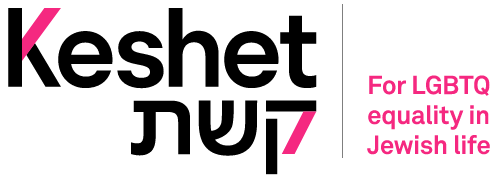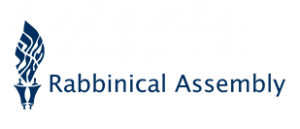Ki Tavo: Stones
Sermon given September 13, 2025
If you’ve ever been in my office and taken a gander at my bookshelf, you may have noticed one of my most beloved possessions: The extremely old tractates of Talmud which occupy their own section of a bookcase.
This set of Talmud is truly dear to me. It is over a hundred years old and resided in Poland in the early 20th century before being brought out to the States before the Holocaust.
The ink was printed on the paper in the old-fashioned way, so if you gently touch the pages, you can literally feel the 3D nature of the letters. The smell that rises from the binding is old and dusty and welcoming.
It’s amazing for me to think of who else might have learned from these pages before me, and what these precious books must have gone through to make it out of Poland before the Shoah, to the United States, and eventually, into my hands. These books are history.
But sadly, they are beginning to fall apart. The covers and spines are peeling and cracking, the pages are starting to come out, and I am reminded every time I open one of the fleeting nature of ink on paper, and how even a book like this amazing set of Talmud, that has already lived longer than a human being lives, will still one day go to the genizah, to a special grave for sacred texts, and there, it will also return to the Earth.
Beyond their impressive physical state, and beyond the sensory and historical facts ascribed to the specific masechtot of Talmud I am lucky to call my own, there is also something deeply soothing to me about opening these books. They remind me that no matter what is going on in my life, or in the world around us; no matter what the Jewish family is facing, to say nothing of the entire human family; no matter when paper crumbles, or ink fades, our stories, and our lessons, and our arguments, will live on, as long as we are committed to them. And physical books are just one of the tools at our disposal in ensuring that this chain is never broken.
In Ki Tavo, which we read from this week, we get to witness how B’nai Yisrael, three thousand years ago, wrestled with the same question-- how do we preserve our lessons and stories as we evolve? In a world where permanence is relative, how do we ensure to the best of our ability that where we came from and who we are is not forgotten?
In Deuteronomy Chapter 27, Moses gives very clear instructions to B’nai Yisrael about the very first things they should do after crossing the Jordan and entering into the Promised Land. First, Moses describes:
וְהָיָ֗ה בַּיּוֹם֮ אֲשֶׁ֣ר תַּעַבְר֣וּ אֶת־הַיַּרְדֵּן֒ אֶל־הָאָ֕רֶץ אֲשֶׁר־יְהֹוָ֥ה אֱלֹהֶ֖יךָ נֹתֵ֣ן לָ֑ךְ וַהֲקֵמֹתָ֤ לְךָ֙ אֲבָנִ֣ים גְּדֹל֔וֹת
And on the day that you cross the Jordan to the Land Adonai your God has given you, you shall make an altar out of great stones.
And then:
וְכָתַבְתָּ֣ עֲלֵיהֶ֗ן אֶֽת־כׇּל־דִּבְרֵ֛י הַתּוֹרָ֥ה הַזֹּ֖את בַּאֵ֥ר הֵיטֵֽב
You shall write upon those stones all of words of this Torah, this teaching I your leader have been giving you, clearly and distinctly.
On stone! (As a side note here, there is great disagreement among our sages about what was meant by “this whole torah”. There are claims of everything from including only overarching commandments to including minutiae. Rashi takes it even a step further, saying that “B’er heytev” doesn’t just mean that the words should be clear and legible, but rather that the Torah should all be written out in 70 different languages. Imagine how many stones and how many artisans we would need for that! But, I digress.)
Back to Moses. Now remember, Moses himself was intimately familiar with writing on stones. He was, after all, the one who brought down the Tablets from Har Sinai, from Mount Sinai, inscribed with the Ten Commandments.
And ever since that day at Har Sinai-- especially ever since B’nei Yisrael reached the borders of the Promised Land and Moses began to share his final wisdom in the book of Deuteronomy-- Moses has been teaching orally, speaking God’s words to the people, trying to prepare them for the life ahead of them.
And now, suddenly, he is telling B’nai Yisrael that as they begin their next chapter, on the other side of the Jordan, they must begin to write everything down. Specifically, to inscribe the Torah onto stone.
Why would Moses want the Israelites to do this?
Perhaps it was because he was nearing death-- perhaps it was because leadership was changing-- perhaps it was because Moses knew that once the Israelites were in the Promised Land, they would spread out and have less contact with each other, which might threaten the future of the stories and history they had made together.
Regardless of the specific reason, the act of choosing to inscribe the Torah onto rock-- literally making it “set in stone” instead of purely an oral tradition-- ensured a certain sense of permanence, a certain reassurance, perhaps, for Moses, that the people he had led with so much love and devotion would not forget the sacred learning he had dedicated his life to transmitting.
There is great wisdom in this step. And yet.
Have you ever visited a really, really old graveyard? One of the ones where time has worn the head markers smooth, where sometimes, even, the Earth itself is starting to reclaim the graves, where you can no longer say for sure who was there, when they were there, what they said? There is a haunting beauty in watching the biblical directive that we shall go from ashes to ashes, and dust to dust, in action.
Because even stones, it seems, have their limits. Stones, like the paper pages of my century-plus year old Talmud, reach a point where they can no longer be relied upon as the main source of transmission: of information, of law, of names, of tradition.
It seems that Moses wanted the Torah to be permanent, so he wanted to make it physical. But if everything physical ultimately falls apart, what can we do to ensure that our tradition not only survives, but thrives?
Some of you had the pleasure of being in this room last Sunday morning. It was the kick-off of our new KBE Hebrew School year and it was AMAzing. We began with a guitar-led, energetic morning minyan with all 70 students, parents, and a cadre of wonderful teachers; we did a school-wide family tree activity with our director, Shane, exploring this year’s theme of L’dor Va’dor; and as the students went to class, the hallls were packed with happy chatter and laughter. It was heartwarming and exhilarating to see so many kiddos and parents making the choice, of all of the things they could have been doing on a Sunday morning, to get up, to drive to the synagogue, and to kick off to another year of Jewish learning.
And I bring up KBE in our discussion of stones because if the question is, what is stronger than stone, where better to see the answer in real life than in the bright eyes of our children, and the love of our teachers, and the power of tradition as it is passed from generation to generation. This is the key: When we, as Jewish adults, surround our kids with a life that pulses joyfully with Judaism, that connects them to their ancient roots, that teaches them to interact with their daily world in a sacred way, we are inscribing Torah not on pages, and not on stones, but on their hearts. When we model welcoming Judaism in on a personal level, and engaging with and encouraging tough questions, we reinforce the rich invisible thread that binds us together l’dor va’dor, from generation to generation. When we invest in our own education and in the education of the next generation of Jews, we have ensured Jewish continuity more than any book or any stone ever could.
Stone is stronger than paper, yes. But a Jew who loves being Jewish and shares that love with others is the strongest of them all. Whether we are involved in the Religious School or Adult Ed classes, whether we are engaged in interfaith discussions or just showing up to services regularly and chatting with fellow community members about the sermon of the day, we are doing our part to strengthen an ancient chain, begun millennia ago in a desert in the Middle East and surviving, God willing, for as long as possible.
L’dor Va’dor nagid godlekha-- from generation to generation we will praise Your greatness.
Shabbat shalom.



